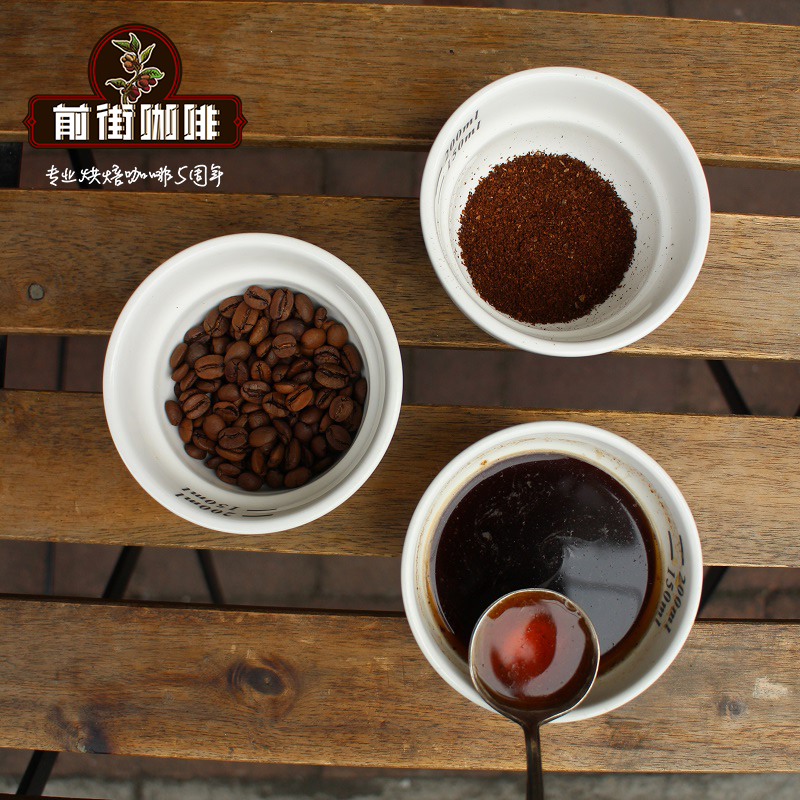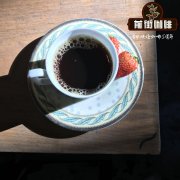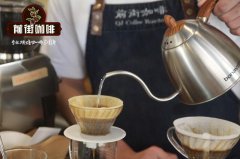Costa Rica Brumas processing Plant | Dona Cromancia Horticultural brothel Seeds Honey treatment COE#2

Professional coffee knowledge exchange more coffee bean information please follow the coffee workshop (Wechat official account cafe_style)
Costa Rican Brumas processing Plant | Dona Clomancia Horticultural brothel Honey deal with COE#28 batch flavor?
The Beneficio Brumas del Zurqui was founded in 1880 by the Rodri í guez Carballo family and is now run by Juan Ram ó n Alvarado Rodr í guez. Finca Dona Clemencia is a new estate he bought three years ago, renamed Dona Clemencia in memory of his mother, Rodri. The estate, which has only one hectare of geisha breeds (Geisha), has just had a small harvest in 2017. It won 28th place in the Costa Rican COE Cup, which is the 28th international bid.
In 2002, when Juan Ram ó n Alvarado Rodr í guez first set up a processing plant in the Central Valley (Central Valley), there were only three small processing plants in the region. Including his treatment plant, Costa Rica has a long history of growing coffee, but in the past 10 years, a new "dry" treatment method has become popular, collectively known as "honey treatment", the function of using scrapers to adjust the scraping degree of pulp. With the color from light to dark (white, yellow-red-white, yellow-red-black), the output presents a "honey feeling" from light to strong, with acidity and complex aroma. Each has its own depth and advantages. Honey treatment started in Costa Rica.
At the same time, Costa Rica has also developed a micro-processing plant (micro mill) coffee characteristic development, the main characteristic development is the hope that each small farm can have its own system for handling beans, so that the collection and processing can be completed by the farm itself, and the best specialty coffee beans can be produced according to their own unique process. Finca Brumas del Zurqui Manor has its own family-owned raw bean processing plant, which originally means "misty valleys". In addition to growing coffee, the estate also helps produce nearby estates and coffee farmers. Coffee has been growing since 1880
In 2006, Brumas won the champion of the Costa Rican National Coffee Competition, and the "honey treatment" of the manor was immediately valued by bean traders all over the world. So since 2007, Brumas coffee beans have always been snapped up before the competition. This international bid is for micro-batch Geisha honey-treated coffee from Dona Clomancia Manor (Finca Dona Clemencia) processed by the Brumas family's processing plant (Beneficio Brumas del Zurqui). Juan Ramon Alvarado and Natalia Gomez Manor is a miniature water treatment plant established by the Juan Ramon Alvarado and Natalia Gomez family in 2002. The family has been engaged in coffee cultivation and production for more than a century, especially Juan Ramon Alvarado.
Is a leader in honey-processing coffee technology, won the third runner-up in the Costa Rican COE Cup (COE) in 2016, and the family member Natalia Gomez's estate El Beneficio won the second place in the COE competition through the experience of the Brumas processing plant in honey processing technology in 2015, which shows that its family manor and processing plant technology have become famous by no accident. Juan Ramon Alvarado he currently has several estates (Zamora) and Baby (La Nena) as well as others. Coffee varieties are bourbon, Kaddura (caturra), geisha and others.
Producing area: central valley (Central Valley)
Manor: Donna Clomancia Manor (Finca Dona Clemencia)
Processing plant: Brumas processing plant (Beneficio Brumas del Zurqui)
Variety: geisha variety (Geisha)
Altitude: 1450 to 1600 m
Grade: European extremely hard beans SHB
Treatment: honey treatment (Honey)
Harvest time: November-March
Certification: NCMA
Flavor description: floral notes, sweet orange, litchi, clear and layered acidity, clean and thorough taste, good hierarchical change, aftertaste.
The record of the award-winning manor produced by the Brumas processing Plant (Brumas del Zurqui):
19th Centro Manor (Finca El Centro) in the Costa Rican Excellence Cup (COE) in 2017
20th place in the 2017 Costa Rican Excellence Cup (COE) (Finca El Beneficio)
2017 Costa Rico Cup (COE) 28th (Finca Do ñ a Clemencia)
No.2 Centro Manor in the 2016 Costa Rican Excellence Cup (COE) (Finca El Centro)
Centro Manor (Finca El Centro), 3rd place in the 2016 Costa Rican Excellence Cup (COE)
Centro Manor (Finca El Centro), 6th place in the 2015 Costa Rican Excellence Cup (COE)
Second place in the 2015 Costa Rican Excellence Cup (COE) (Finca El Beneficio)
The 10th place in 2014 Costa Rico COE Cup competition.
18th place in 2014 Costa Rican Excellence Cup (COE) Competition (La Nena)
Seventh place in the 2013 Costa Rican Excellence Cup (COE) Competition (La Nena)
12th place in 2013 Costa Rica Excellence Cup (COE) Competition (Zamora)
The first place in the 2012 Costa Rican Excellence Cup (COE) Competition (Zamora)
2012 Costa Rica Excellence Cup League tournament
(1st place in Excellence for Coffee A (93.47 points in cup test)
2012 Costa Rica Agricultural Poultry and Coffee Association Department (the Ministry of Agriculture and Livestock and the Coffee Institute of Costa Rica) awarded the Best Coffee improvement contribution Award
The second place in 2006 Costa Rica non-Coffee Management Promotion official Unit (SINTERCAFE) Cup Test Competition
Qianjie recommended cooking:
Filter cup: Hario V60
Water temperature: 90 degrees
Degree of grinding: small Fuji 3.5
Cooking methods: the ratio of water to powder is 1:15, 15g powder, the first injection of 25g water, 25 s steaming, the second injection to 120g water cut off, waiting for the powder bed water to half and then water injection, slow water injection until 225g water, extraction time about 2:00
Analysis: using three-stage brewing to clarify the flavor of the front, middle and back of the coffee. Because the V60 has many ribs and the drainage speed is fast, it can prolong the extraction time when the water is cut off.
Important Notice :
前街咖啡 FrontStreet Coffee has moved to new addredd:
FrontStreet Coffee Address: 315,Donghua East Road,GuangZhou
Tel:020 38364473
- Prev

Introduction of Mamakat Manor in Pokuit Coffee producing area of Panama
Professional coffee knowledge exchange more coffee bean information Please follow Coffee Workshop (Wechat official account cafe_style) Panama Bouquete Mamacata Panama is located at the border of North and South America, facing the Pacific Ocean on the left and the Atlantic Ocean on the right, so it plays an important role as a bridge between the two oceans and occupies the key to this geography. Since it became a Spanish colony in 1501, it has been
- Next

Introduction to Don Benjie Muller Benjamin Manor in Panama. Is the summer of Benjamin Manor good?
Professional coffee knowledge exchange more coffee bean information please follow the coffee workshop (Wechat official account cafe_style) Don Benjie Muller, Geisha Lot 2 Benjamin Manor 2 Rose Summer Sun Elida Wilford R1-No.6: Lutrel Geisha about Rose Summer, someone once said: I am the least religious person here and when I tas
Related
- Detailed explanation of Jadeite planting Land in Panamanian Jadeite Manor introduction to the grading system of Jadeite competitive bidding, Red bid, Green bid and Rose Summer
- Story of Coffee planting in Brenka region of Costa Rica Stonehenge Manor anaerobic heavy honey treatment of flavor mouth
- What's on the barrel of Blue Mountain Coffee beans?
- Can American coffee also pull flowers? How to use hot American style to pull out a good-looking pattern?
- Can you make a cold extract with coffee beans? What is the right proportion for cold-extracted coffee formula?
- Indonesian PWN Gold Mandrine Coffee Origin Features Flavor How to Chong? Mandolin coffee is American.
- A brief introduction to the flavor characteristics of Brazilian yellow bourbon coffee beans
- What is the effect of different water quality on the flavor of cold-extracted coffee? What kind of water is best for brewing coffee?
- Why do you think of Rose Summer whenever you mention Panamanian coffee?
- Introduction to the characteristics of authentic blue mountain coffee bean producing areas? What is the CIB Coffee Authority in Jamaica?

